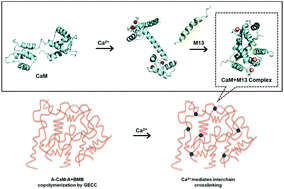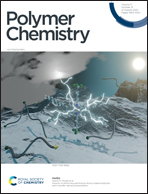Calcium-responsive hydrogels enabled by inducible protein–protein interactions†
Abstract
The inherent complexity of cell–matrix interactions calls for smart materials that can actively sense and respond to environmental stimuli with physiological relevance. Here we demonstrate the creation of entirely protein-based Ca2+-responsive hydrogels by covalently assembling calmodulin (CaM) and its cognate ligand, M13-peptide, using SpyTag/SpyCatcher chemistry. The resulting protein hydrogels comprising CaM and M13 exhibited mechanics and stability dependent on Ca2+, an important second messenger in biology, as well as suitability for 3D cell culturing. These results demonstrate the feasibility of using inducible protein–protein interactions to design biomaterials with dynamic properties, providing new opportunities for materials biology.



 Please wait while we load your content...
Please wait while we load your content...